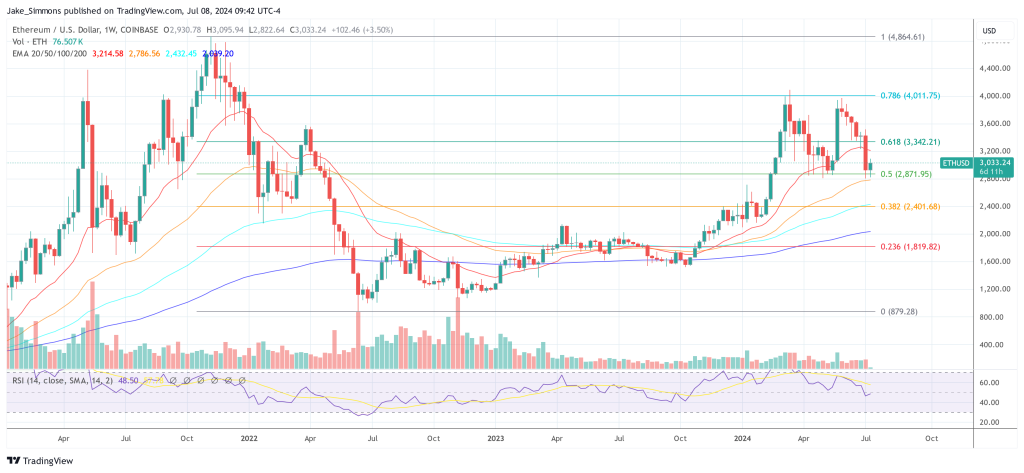Crypto Pundit Calls Top Layer-2s A ‘Dystopian Nightmare Of Centralization’
Justin Bons, founder and chief investment officer of Cyber Capital, has sparked a polarizing debate in the crypto community with a scathing critique of the current Layer-2 (L2) solutions on Ethereum. The founder of the oldest crypto fund in Europe described networks like Arbitrum, Base and Optimism, designed to improve Ethereum’s scalability by offloading transactions […]

Justin Bons, founder and chief investment officer of Cyber Capital, has sparked a polarizing debate in the crypto community with a scathing critique of the current Layer-2 (L2) solutions on Ethereum. The founder of the oldest crypto fund in Europe described networks like Arbitrum, Base and Optimism, designed to improve Ethereum’s scalability by offloading transactions from the main chain, as a “dystopian nightmare of centralization.”
Why Most L2’s Are A “Dystopian Nightmare”
Bons’ analysis targets several top L2 solutions like Arbitrum, Base, Optimism, Blast, ZKSync, Linea and Mantle, among others. He argues that all of them are plagued by centralization risks that could potentially allow network operators to receive control over user funds. This centralization comes in the form of “multi-sig” controls and centralized sequencers, which can, in theory, manipulate transaction order for profit or freeze funds.
In his analysis, Bons points out specific features within these networks that heighten these risks. For instance, he noted that networks like Arbitrum and Base have structural vulnerabilities due to their reliance on multi-sig controls and permissioned proposers, which could lead to scenarios where user funds are instantly accessible by a centralized authority.
“Arbitrum – Can steal all user funds instantly with a multi-sig, has permissioned proposers, centralized operator can exploit MEV & centralized sequencer can censor,” he stated and continued that “Base an steal all user funds instantly with a multi-sig, permissioned proposer can also steal all user funds, the centralized validator can freeze all funds, a centralized operator can exploit MEV & the centralized sequencer can censor.”
Similarly, Optimism and other networks suffer from potential centralization, with Bons highlighting the ability of centralized operators to exploit maximal extractable value (MEV) and censor transactions. According to him, Optimism “can steal all user funds instantly with a multi-sig, the centralized operator can exploit MEV & centralized sequencer can censor.”
He further criticized networks like Blast for having mechanisms that could potentially freeze user funds under specific conditions like insufficient liquidity on the bridge, alongside issues related to censorship by centralized sequencers.
Wrong Incentives?
The statement by Bons led to mixed reactions within the industry. Crypto pundit DBCrypto (@DBCrypt0) supported Bons’ claims and accused Ethereum maximalists as blind if they believe in the decentralization of these platforms despite current “evidence” to the contrary.
DBCrypto questioned the economic incentives for such L2s to adopt a shared sequencer model, given the significant earnings at stake, stating, “Coinbase currently makes how many millions a month off Base? OP and ARB hold around 50% L2 market share currently? Will they choose to join a shared sequencer and give up much of their earnings?”
Responding to such comments, Bons expressed his concerns about the broader implications of these design choices, emphasizing a lack of consideration for social and economic impacts. “Some of it can be explained by the naivety of engineers only thinking about technical problems, not social ones,” Bons said.
He also pointed out the role of misaligned incentives, particularly within venture capital investments, which favor short-term gains over long-term sustainable and decentralized development. “ VCs make much more money off ETH in the short term if it continues with L2 scaling,” he concluded.
At press time, ETH traded at $3,049.

What's Your Reaction?




















